Is This Seat Taken? is an organization puzzle videogame where I arrange a cast of characters in various scenarios that satisfies all their preferences. In concept, it’s like being put in charge of a seating chart at a wedding or state dinner, but in execution the settings are more mundane and the people’s needs more inane. Over the course of about six hours, I solve puzzles across 27 different levels in five cities inhabited by sentient shapes. As I progress, I witness the budding film career of a young actress named Nat.
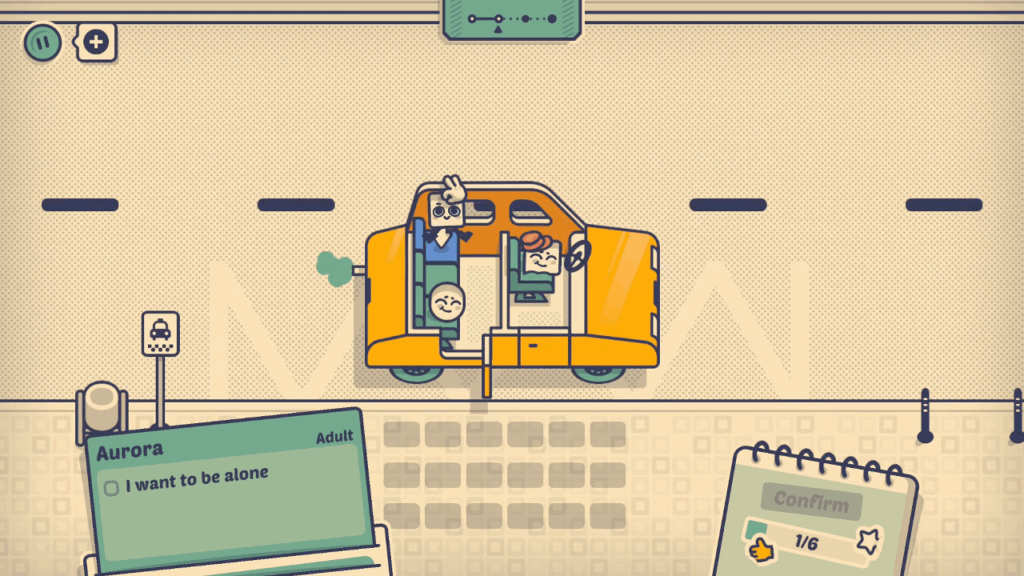
The basic concept of Is This Seat Taken? is to take a crowd of shapes and find a way to place them in a space that satisfies their different preferences and requirements. The interface does a great job relaying all of the relevant information. Hovering the cursor over a shape causes a small card to pop up in the bottom-left of the screen that lists their needs. Most shapes have only a single preference, though others have more elaborate requirements.
The first level swiftly acclimates me to this form of puzzle solving by putting me in charge of multiple groups of passengers loading into taxi cabs as they leave a film festival. In one particular group, there are two shapes boarding a taxi with three seats. Aurora wants to be alone, and Jordi wants to sit by a window. I drag and drop the shapes into both of the taxi’s window seats, leaving the middle seat between them empty. I can see from the delighted looks on both shapes’ faces that they’re happy with this arrangement, the puzzle completes, and I move on to the next group.
The following levels grow in scale and intricacy. Instead of a small group of shapes and a taxi, I must deal with larger groups, sometimes more than a dozen at once, in scenarios like taking a river tour, waiting in an airport terminal, and eating at a diner.
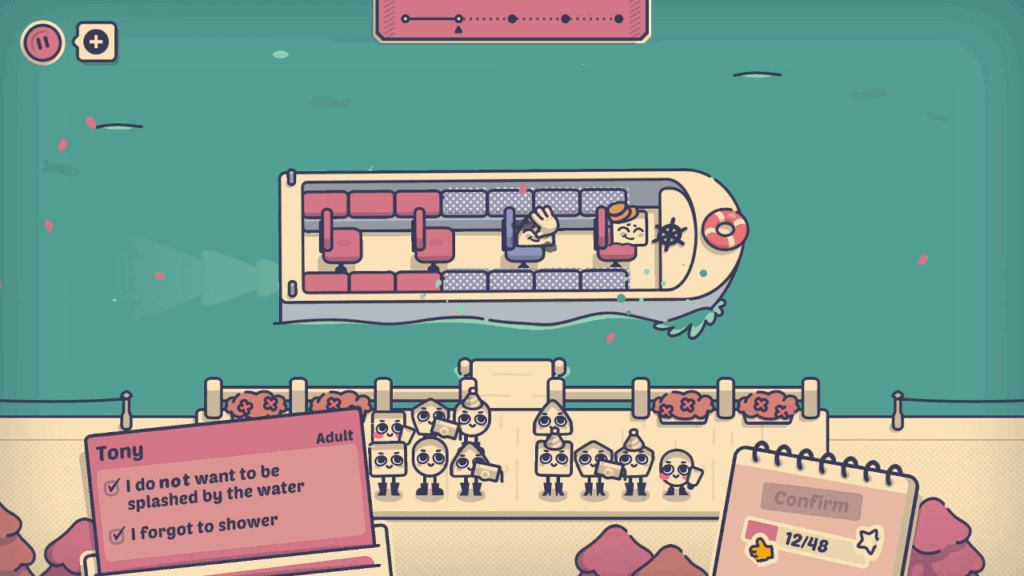
The needs of the shapes increase in complexity with the scale of the stages. In vehicle levels, some shapes need to face in the direction they are traveling or they will experience motion sickness. In an airport terminal, I need to sort out which shapes are ready to board the next flight and which should be sat in the waiting area. It’s usually neighboring shapes that cause the greatest friction. Shapes who are friends or family want to sit or stand next to their partners. Some shapes are sensitive to strong odors, and this is a world whose denizens are curiously apt towards slathering themselves in cologne or outright forgetting to shower. Other shapes want to read or sleep and must be kept far away from shapes who want to chat with their neighbors or listen to loud music on their headphones. Again, the interface does a great job displaying pertinent information, highlighting which spaces around a shape will be affected by their loud music or body odor when they are placed over a spot.
The most elaborate levels add an additional layer of complexity. Objects like air conditioners, the food served in a restaurant, or the position of folding chairs in a stadium must also be configured to satisfy the shapes in the current puzzle. I must also take the space’s social context into account. On a bus or in a restaurant, shapes who want to chat with one another need to be placed together. When talkative shapes appear in a classroom setting, they must be kept apart to ensure they do not distract other students or the teacher.
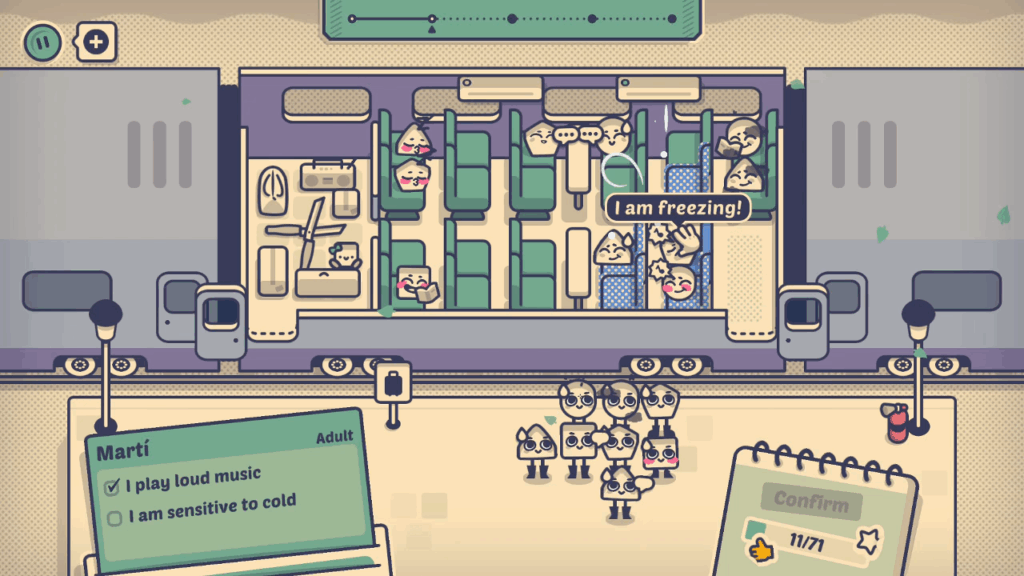
While Is This Seat Taken? overall does a splendid job communicating a lot of information in a simple and efficient way, there are a few puzzles whose solutions require some fiddling for me to understand their logic. Many shapes want to be “alone,” but are still satisfied being in close proximity with others; to them, being alone means nobody to their immediate right or left. In the diner setting, there is never enough food to serve every shape present, so total strangers must be placed at the same table with a single hamburger placed between them. Nobody seems to find this arrangement unusual or unpleasant. A guest at a wedding does not want to be seated with any “elegant” shapes; I can identify these shapes by their clothes, though which are considered elegant or inelegant is not clearly communicated.
If I do become stuck on a puzzle, there is nothing forcing me to perfectly accommodate every shape present. As long as every shape is given a space to occupy, whether they are happy with it or not, I can finish the level with a button press. This makes it possible to zoom through every level in just a few minutes by haphazardly dropping shapes anywhere then pressing the complete button.
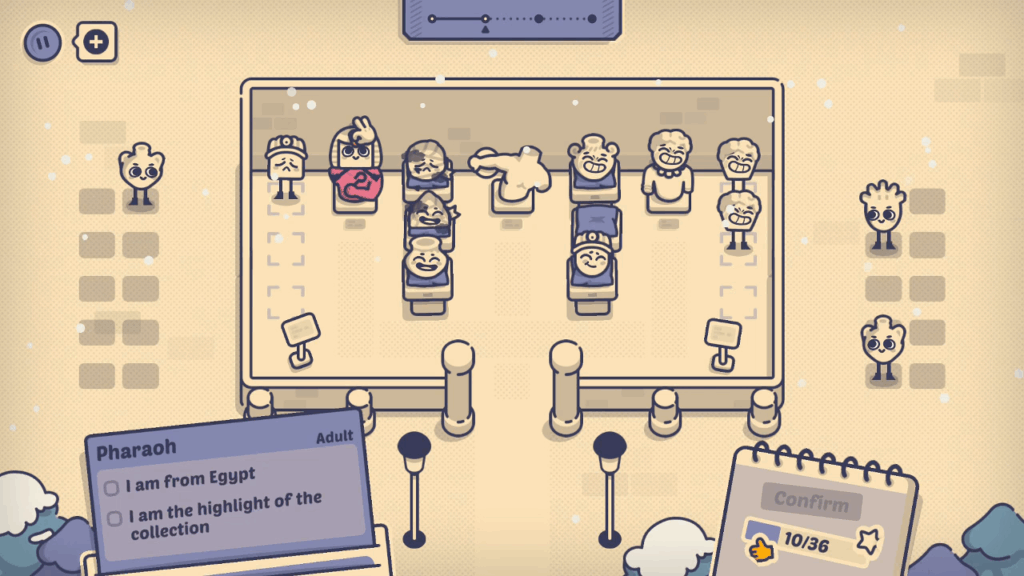
The incentive to get perfect ratings is that these accomplishments unlock new puzzles. Each level is divided into groups of five or six across five different cities. Getting perfect scores in every level in a city unlocks its secret area. These exclusive zones are typically more interesting than the otherwise mundane settings, including a museum with highly opinionated exhibits and a speed dating event where I must pair up matching couples. These bonus levels, while optional, add some nice twists to the atmosphere just as it starts to become routine.
Every level, except the bonus ones, is linked by a loose narrative. One of the passengers I load into a taxi in the first level is an aspiring rhombus actress named Nat, distinctive among the crowds of random shapes by her gold-laced boots and golden loop pierced onto her left point. Every setting I visit is a result of Nat’s journey to star in her own independent film.

This narrative construct is the greatest flaw of Is This Seat Taken? I am unable to reconcile what the puzzles’ theme, organizing people in a space, has to do with Nat’s personal mission, to star in a film. I am supposed to accept that her many trips on mass transit, attending classes at a community college, and social trips with friends are inexorable parts of a journey to film stardom. I am unable to do so. The only time it feels like Nat’s goals and the videogame’s puzzles align are in the final level, where I must arrange shapes for publicity photos at a movie premiere when Nat inevitably succeeds.
This focused narrative holds Is This Seat Taken? back in other ways. There is a lack of creativity in its chosen settings. Levels make repeated visits to trains, airplane terminals, movie theaters, classrooms, stadiums, and nightclubs with identical appearances and layouts, when they take place in different cities and even on different continents. These many recycled settings do not detract from the ingenuity and fun of the puzzle solving, but they do inject a lamentable feeling of recycled substance, an inescapable sense that I have already seen the current level before. It’s almost true.
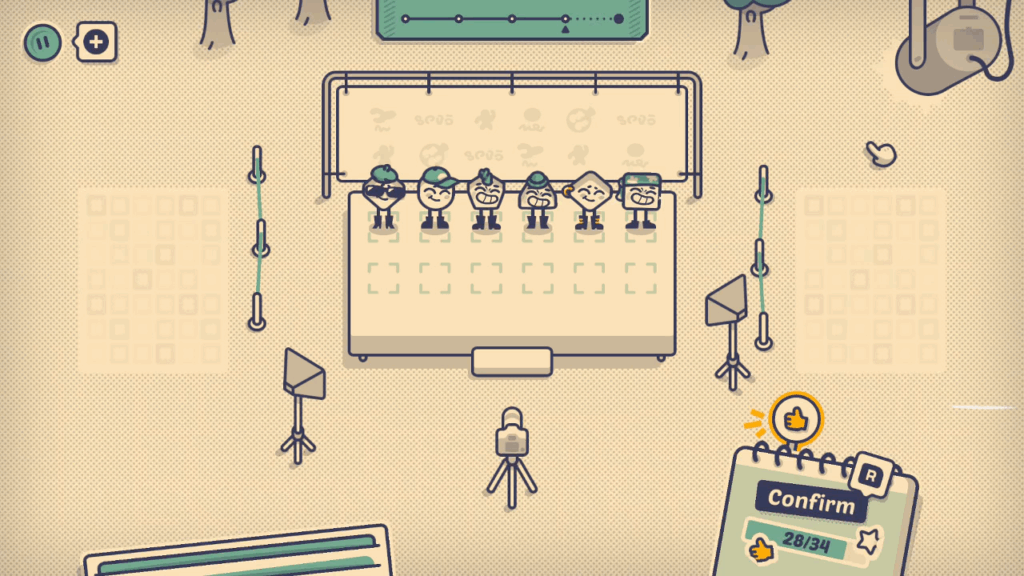
Is This Seat Taken? is a unique puzzler filled with charm and ingenuity. It avoids the common pitfalls of the puzzle videogame. It is long enough to be satisfying, but not so long that I begin to lose interest or puzzle solutions become overly familiar. Its puzzles make me think and experiment, but are not so inscrutable that they make me give up. Its main flaw is its narrative, featuring a character with goals disconnected from what the videogame is about. Videogame design is storytelling, and the story Is This Seat Taken? tells is not the one this budding actress is experiencing. The dissonance lurks under every moment of my playtime and bursts forth whenever Nat appears in a puzzle.